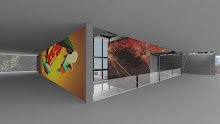
Experience:
Emotions:
Elements:
In the process of uploading the edited version of the video.
To stimulate and instigate JUICY dialogue with JUICY Questions, Statements and Perspectives backed by JUICY internet fragments.

Clarence the smooth busker
– VERSUS –
Moey the cute puppy
What: Clarence the experienced busker, is put to the test when Moey the cute Welsh Corgi/Maltese Puppy is set across the isle from him. The passer bys, if responsive, have a choice to respond to Clarence’s old school bluesy acoustic sessions or to the cute 8 month puppy.
Where: Central station
Results between
Clarence =
13 tips and
3 long conversations.
Moey =
6 pats and
3 short conversations.
75 smiles.
with an average of 3people passing per 5seconds.
Notes:
Clarence is in his domain, it seems who ever sits in the tunnel is seen as a busker and therefor is subject to curious looks.
Those who pat and smile at Moey are usually women, between 15 to 30 years of age.
Clarence is very well spoken and points out that “a cute dog like Moey would get more pats as suppose to something like a pitbull. Or a crappy singer as suppose to a cute dog.”
Those who do tip seem like regulars and confront Clarence with a smile.
This is fairly general, but I noted that people crave feelings from their surrounds. People usually start the tunnel journey with an unconscious grin, a kind of cameleon affect from the surroundings. Once they get to Clarence’s music or Moey they tune in and consciously smile.
Thank you to the buskers of
-
The experiment was continued in Pitt St soon after:
The 26-year-old from Utica, N.Y., paid his way through college by scrubbing dishes at a diner. That job might help him become the Quentin Tarantino of video games: He used it as inspiration for The Dishwasher, in which the title character becomes a ninja and slashes his way out of a kitchen overrun by villains.

Microsoft Corp. agreed to publish his stylized action game on the Xbox 360 console and highlighted it at the Game Developers Conference here recently. More than 16,000 people, many of them novices with similar ambitions, attended the show.
"This has been my dream since forever," Silva said in an interview. "It sounds cliche, but I actually have to pinch myself just to make sure I'm really awake."
He's not alone. Much as YouTube is giving unknown video auteurs a chance to find audiences, the video game industry is opening its doors to upstart developers. Major companies including Microsoft and Sony Corp. are starting to snap up and promote games by amateurs and independent developers as an antidote to the soaring budgets of mainstream games.
Highlighting the shift, the conference's Game of the Year award went to Portal, which was developed by a team of students from the DigiPen Institute of Technology in Redmond, Wash. The puzzler beat out big-budget industry franchises such as Super Mario Galaxy, Rock Band, Bioshock and Call of Duty 4.
"The lines between the professional developer and the community are beginning to shimmer," said Jamil Moledina, the conference's executive director.
A few years ago, aspiring programmers such as Silva wouldn't have stood a chance. The games business has adopted the movie industry approach of spending big in search of huge hits. Creating a single new game can require tens of millions of dollars and more than 100 developers working several years.
But a recent proliferation of easy-to-use and cheap or free software has made it possible for a programmer with a good idea to make games at his home.
There's a market for those games now. Microsoft, Sony and Nintendo Co. have built online stores where millions of players can buy and download games via Internet-connected consoles, bypassing traditional retailers that refuse to stock anything but blockbuster titles.
Take Kyle Gabler. In 2005, he created the prototype for a game called World of Goo in four days.
Gabler, 26, and Ron Carmel, 35, started their own shop, 2D Boy. They refined World of Goo on five-year-old laptops. The result, a wacky cartoon world where players make structures out of goop to solve puzzles, won awards for technical excellence and design innovation at last week's conference. Nintendo has signed the game to sell through its Wii Ware online store.
Also this post is still all over the place, but until I put it up I won’t know how best to edit it.
What a great idea: Lets promote war to the next generation...
PROPAGANDA? The US Army has a recruitment strategy to target the next generation via a free online game called
"The developers claim that the game is played by several million players. According to a survey, the game had between 3,000 and 6,000 players online simultaneously from 2002 until 2005."
a little link in the left hand corner.
-
So what does this say about gamers?
Has the US Army realised the power and potential of the gaming generation? (that's a bit obvious I think)
lets just smash you with the JUICY facts!
GAMING: 2005
Is a $28 billion industry worldwide.
Around 10 million people worldwide play at least one of the 350 so
massively multiplayer online games (MMOGs) like Everquest.
Phone games: 2003 sales around $587 million but are projected to grow
to $2.6 billion by the end of 2005.
First-day sales of Micrsoft's Xbox game Halo 2 were $125 million.
"You can't ignore an industry when people queue to buy a game at
Kevin Roberts, CEO Saatchi & Saatchi.
The average gamer age is 28 yrs old.
August, 2006, World Of Warcraft (WOW) 6million subscribers.
6million subscribers.
March, 2008 = 7,007,917
http://www.warcraftrealms.com/census.php
Why do people love games?
Entertainment
interaction
disorientation and
intrigue
backed by the projection that technology will compensate for the physical disorientation.
The activation of the right side of the brain.
To dream
To be lost
suspensful
a connection with virtual surrounds.
Immediate surroundings affect emotions
the senses
a personal journey of fluctuating sensations.
Appreciation of the human scale
Anonymity
To be whoever you want whenever you want.
Socially
To be a part of or act out a team member, leader or group.
Maybe gamers want to go against or escape Sigmund Freud’s theory of sexual desire or libido as the primary motivational energy of human life. Until some one can link libido to gaming.
human life. Until some one can link libido to gaming.
The power of the story: the emotion of the narrative.
Story telling at its peak infuses drama, intimacy, mystery and the senses all on high alert. But don't forget they don't have to be first hand experiences at all. Stories are emotional by nature. They give us perspective and they inspire us to action.
"The essential difference between emotion and reason is that emotion leads to action, while reason leads to conclusions."
reason is that emotion leads to action, while reason leads to conclusions."
What people want:
CHOICE
INTERACTION and thus FREEDOM.
We like most of all to do several things at the same time.
We want great stories.
example of a World Of War Craft story: from Wikipedia
The Corrupted Blood plague incident was one of the first events to affect entire servers. Patch 1.7 saw the opening of Zul'Gurub, the game's first 20-player raid dungeon where players faced off against an ancient tribe of jungle trolls under the sway of the ancient Blood God, Hakkar the Soulflayer. Upon engaging Hakkar, players were stricken by a debuff (a spell that negatively affects a player) called "Corrupted Blood" which would periodically sap their life. The disease would also be passed on to other players who were simply standing close to an infected person. Originally this malady was confined within the Zul'Gurub instance but made its way into the outside world by way of hunter or warlock pets that contracted the disease.
Within hours Corrupted Blood had infected entire cities such as Ironforge and Orgrimmar because of their high player concentrations. Low-level players were killed in seconds by the high-damage disease. Eventually Blizzard fixed the issue so that the plague could not exist outside of Zul'Gurub.
The corrupted blood plague so closely resembled the outbreak of real-world epidemics that scientists are currently looking at ways MMORPGs or other massively-distributed systems can model human behavior during outbreaks. The reaction of players to the plague closely resembled previously hard-to-model aspects of human behavior that may allow researchers to more accurately predict how diseases and outbreaks spread amongst a population
http://en.wikipedia.org/wiki
To be edited and continued...
visually taste some online games at:











Have you seen these taxis around? apparently they give free rides, but is anything free?
Marketing has hit Sydney streets. You've seen cars with adverts over them but have you been in a free taxi that advertise inside during your journey?













“I've never been into video games, but this is addictive,” said 72-year-old Flora Dierbach. “They come in after dinner and play. Sometimes, on Saturday afternoons, their grandkids come play with them … A lot of grandparents are being taught by their grandkids. But, now, some grandparents are instead teaching their grandkids.”
http://www.thisisthelast.com/2007/02/22/nintendo-console-has-officially-gone-geriatric/
“This is pretty realistic. You can even put English on the ball,” said Don Hahn, 76, a veteran of numerous real-life bowling competitions. “I used to play Pac-Man a little bit, but with this you're actually moving around and doing something. You're not just sitting there pushing buttons and getting carpal tunnel.”
Article: Bashcraft's Japan Wii Launch coverage: Elderly men seen lining up for Wii and PS3: http://gizmodo.com/gadgets/home-entertainment/wii-turns-elderly-into-addicts-238986.php
http://kotaku.com/gaming/jpn-wii-launch/jpn-wii-launch-not-homeless-winos-but-elderly-gamers-218530.php
Does this mean, the better gaming interfaces evolve the easier the game/Technology can be absorbed into society.
If Nintendo Wii with its physically interactive gaming control system, can get over 70yr olds to participate, just imagine what the ‘Emotiv Epoch’ brain wave sensing helmet gizmo can do. Whilst wearing the Epoch a player can control the game by just thinking it. In tech terms it is called BCI (Brain Control Interface).
What is Wii? http://www.nintendo.com/wii/what
What is Epoch? http://www.emotiv.com/
 "For the moment, though, Emotiv is developing the technology for video gaming. There are two reasons. The first is that video gamers are early adopters of new technology and Emotiv is hoping they will help it spread. The second, as I am about to learn, is that the Emotiv technology transforms the gaming experience into something almost magical: you can make things happen, move things, shoot things, kill people even, almost anything really, just by thinking about it."
"For the moment, though, Emotiv is developing the technology for video gaming. There are two reasons. The first is that video gamers are early adopters of new technology and Emotiv is hoping they will help it spread. The second, as I am about to learn, is that the Emotiv technology transforms the gaming experience into something almost magical: you can make things happen, move things, shoot things, kill people even, almost anything really, just by thinking about it."
 Not all realistic gaming interfaces will enhance technology. I cannot comprehend why people would spend their time learning a joystick that looks like a guitar rather than actually playing a real world electric guitar.
Not all realistic gaming interfaces will enhance technology. I cannot comprehend why people would spend their time learning a joystick that looks like a guitar rather than actually playing a real world electric guitar.
 The next Jimmy Hendrix might never touch a real guitar.
The next Jimmy Hendrix might never touch a real guitar.
Advice: what not to buy for Christmas...


